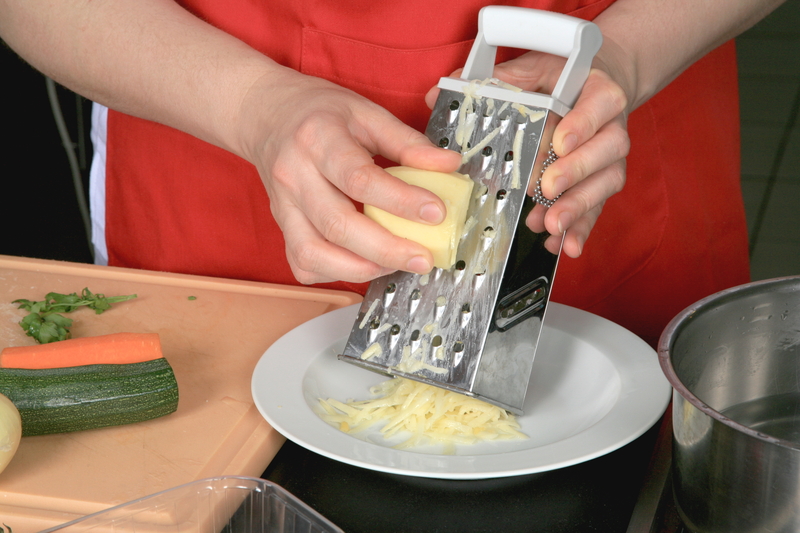Beautifully Clean Sofas: Tips to Wash Your Covers Without Damage
Posted on 21/08/2025
Beautifully Clean Sofas: Tips to Wash Your Covers Without Damage
A refreshingly clean sofa can instantly transform your living space, making it more inviting and comfortable. But with everyday use, your sofa covers often become a magnet for stains, dust, pet dander, and other contaminants. The fear of damaging fabrics can hold you back from deep cleaning. In this comprehensive guide, we'll reveal expert tips to wash your sofa covers without damage, ensuring your furniture stays fresh, vibrant, and beautifully clean for years to come.
Why Regularly Cleaning Sofa Covers Matters
Your sofa is a central hub in the home. Whether you're relaxing after work, hosting guests, or playing with children and pets, upholstery can quickly accumulate grime. Here's why cleaning sofa covers should be at the top of your housekeeping list:
- Health and Allergen Control: Regular cleaning removes allergens like dust, pollen, and pet hair that trigger sneezing, coughing, and discomfort.
- Prolonged Fabric Life: Gentle but effective washing prevents the premature wear and tear that shortens the lifespan of your furniture.
- Odor Elimination: Deep cleaning eradicates lingering smells left by food, pets, or moisture, keeping your sofa covers fresh.
- Appearance Boost: Spotless covers help your sofa look as beautiful as the day you bought it.
Taking care of your sofa covers not only protects your furniture investment but also promotes a healthier, more appealing home environment.

Understanding Sofa Cover Fabrics
Before washing your sofa covers, always check the manufacturer's label. Different fabrics require different care, and knowing your sofa cover's material is the first step to a safe and successful wash. Here are common types and their unique needs:
- Cotton and Linen: Usually machine washable but may shrink if washed in hot water or tumble dried.
- Polyester and Microfiber: Resilient and easy to clean, but always use gentle cycles and mild detergents.
- Wool and Velvet: Often require spot cleaning or professional services as water can damage fibers.
- Leather and Faux Leather: Should be wiped with a damp cloth and specialized cleaners--never submerged in water.
- Mixed Blends and Delicates: Check the label. A gentle hand wash or professional cleaning might be safest.
Tip: If the tag says "dry clean only" or "professionally clean," do not attempt to wash at home to avoid irreversible damage.
Pre-Cleaning Essentials: How to Prepare Sofa Covers
Preparation is the key to washing sofa covers without damage. Take these essential steps before starting your cleaning journey:
- Read the Care Label: Look for washing symbols and instructions.
- Vacuum First: Remove loose dirt, dust, and pet hair for a more effective clean and to avoid friction that can cause damage.
- Spot Treat Stains: Use a color-safe, gentle stain remover to pre-treat food, drink, or ink marks. Allow the remover to sit as recommended on the packaging.
- Check for Colorfastness: Dab a hidden area with your intended cleaning solution and a damp cloth. If the color bleeds, do not proceed with that cleaner or washing method.
- Close Fastenings: Zip up all covers and close Velcro/snaps to maintain their shape and integrity during washing.
Best Methods to Wash Sofa Covers Without Damage
Not all sofa covers are made equal. Depending on the fabric, you'll need to select the appropriate washing method. Here's how you can achieve beautifully clean sofa covers--without risk:
1. Machine Washing Sofa Covers: Step-by-Step
Machine washing is one of the easiest ways to get sofa covers beautifully clean, if the care label permits. Follow these steps for optimal results:
- Select Gentle Cycle: Use a delicate or gentle program to avoid abrasive agitation.
- Cold or Lukewarm Water: Hot water can shrink or distort some fabrics. Stay on the safe side with temperatures under 30?C (86?F).
- Mild Detergent: Choose a detergent without bleach or harsh chemicals. Liquid detergent disperses more evenly than powder.
- Small Load: Wash covers separately or with like colors. Overcrowding increases friction that can cause pilling or tearing.
- Avoid Fabric Softener: It can leave residues, making covers less breathable.
- Double Rinse (Optional): Ensures all detergent is washed out for sensitive skin or allergy sufferers.
Pro Tip: If your washing machine has a "hand wash" setting, use it for extra care, especially with delicate materials.
2. Hand Washing Sofa Covers: A Gentle Alternative
Some sofa fabrics need the gentle hand. Here's how to wash your sofa covers without damage using a hand wash approach:
- Fill a Bathtub or Large Basin: Use cold or lukewarm water.
- Dissolve Mild Detergent: Mix thoroughly so there's no residue.
- Submerge Sofa Covers: Gently agitate with your hands--do not scrub or wring.
- Let Soak: 15-30 minutes for tough grime.
- Rinse Repeatedly: Until water runs clear, ensuring all soap is gone.
- Press Out Water: Press gently (don't twist or wring) and roll in a towel to remove excess moisture.
Hand-washing is ideal for sensitive fibers and embroidered, decorative covers.
3. Spot Cleaning: For Quick Fixes and Delicate Fabrics
If the stain is small or your cover is labeled as "not washable", spot cleaning is safest:
- Test First: On an inconspicuous patch.
- Use a Clean, Damp Cloth: Apply a small amount of mild soap or upholstery cleaner and blot gently.
- Avoid Soaking: Do not overuse water, as it can damage both fabric and the sofa's filling.
- Blot Dry: Use a dry towel to absorb excess moisture.
Spot cleaning maintains the integrity of delicate or non-removable sofa covers.
Drying Sofa Covers: Best Practices for Minimal Damage
After the wash, drying is the next critical step in keeping your sofa covers looking clean and new without damage:
- Air Dry Flat: Lay covers flat on a large towel, reshaping seams and corners to avoid stretching or shrinking.
- Avoid Direct Sunlight: Sun can fade or weaken many fabrics. Dry indoors or in shaded areas.
- Ventilated Space: Enhance airflow with windows open or a fan to speed up drying and minimize mildew risks.
- No Tumble Dryers: Unless the care label specifically indicates machine drying is safe, avoid dryers, as heat can shrink or degrade fabric.
- Do Not Iron While Damp: Some fabrics may stretch or develop shiny patches if ironed wet. Iron on low heat if needed, or steam gently once dry.
Never re-fit your sofa covers while damp--they can stretch out of shape or transfer moisture to the sofa structure beneath!
How Often Should You Wash Sofa Covers?
Regular cleaning is key. But how often is enough? Here are general guidelines for keeping your sofa covers beautifully clean:
- Light Use: Every 6-12 months
- Homes with Pets or Children: Every 2-3 months
- Allergy Sufferers: Every 1-2 months for best results
- Spot Clean Immediately: For spills, stains, or pet accidents, address as soon as possible.
Set reminders! Consistent maintenance is easier--and far more effective--than waiting for grime to build up.
Pro Tips to Keep Sofa Covers Looking New
Extend the life and beauty of your freshly cleaned sofa covers with these easy maintenance strategies:
- Vacuum Weekly: Remove surface dust and crumbs to prevent settling particles from embedding in fibers.
- Rotate Cushions: Regularly flip and switch cushion positions to ensure even wear and fading.
- Protect from Sun: If possible, position sofas away from direct sunlight or use UV-resistant window coverings.
- Use Throw Blankets: Throws on high-traffic areas add comfort and further guard against dirt and spills.
- Create No-Food Zones: The less food contact, the fewer stains you'll risk.
FAQs on Sofa Cleaning and Cover Care
Can I wash all removable sofa covers in the washing machine?
Not always. Check the care instructions first. While many cotton and polyester covers are machine washable, delicate, wool, silk, leather, or heavily decorated covers might not be. When unsure, opt for hand washing or seek professional help.
Should I use hot water to tackle tough stains?
No! Hot water often "sets" stains and can shrink or distort covers. Always use cold or lukewarm water for washing sofa covers without harm.
How do I remove pet hair from sofa covers before washing?
- Use a vacuum cleaner with an upholstery attachment.
- Try a lint roller or slightly damp rubber glove to lift hair off fibers.
Is it okay to iron sofa covers?
Generally, you can iron on a low setting once dry, but avoid high heat and always check the fabric label. Some materials (like microfiber) do not require ironing and could be damaged by excess heat.
Can I wash non-removable sofa covers?
You cannot submerge non-removable covers, but you can freshen and clean in place with spot cleaning and a fabric-safe upholstery cleaner.

Sustainability: Eco-Friendly Tips for Cleaning Sofa Covers
Being eco-conscious doesn't mean compromising on cleanliness. Here's how to achieve beautifully clean sofas in a sustainable way:
- Use Plant-Based Detergents: Seek biodegradable, non-toxic cleaning products safe for your family and the planet.
- Wash Full Loads: If possible, combine covers of similar colors and care needs.
- Air Dry Naturally: Reduce energy usage by laying covers flat to air dry.
- Reduce Frequency: Don't "overwash." Regular vacuuming and spot cleaning are often enough to delay deep cleans.
- Repair, Don't Replace: Mend small tears or loose seams to prolong the life of your sofa covers.
Conclusion: Enjoy Beautifully Clean Sofa Covers Year-Round
A beautifully clean sofa doesn't have to be difficult or time-consuming. With the right knowledge and gentle approach, you can keep your sofa covers clean without damage, ensuring your living space always impresses. Remember to check fabric care labels, pre-treat stains, use mild cleaners, and dry carefully. And for ongoing freshness, adopt regular vacuuming, rotate cushions, and protect from sun exposure.
By following these professional tips, you'll enjoy the look, feel, and health benefits of spotlessly clean sofa covers--all while preserving your furniture's comfort and value. Happy cleaning!
```


